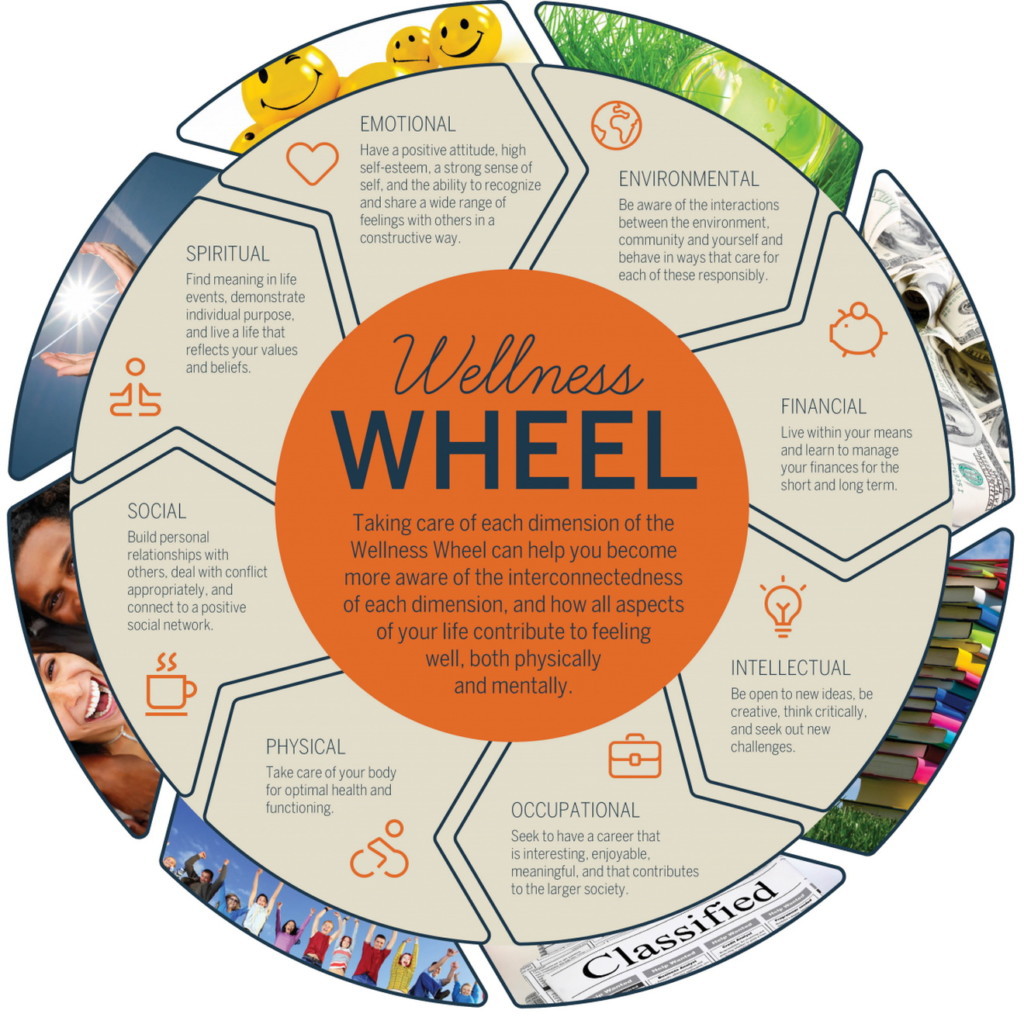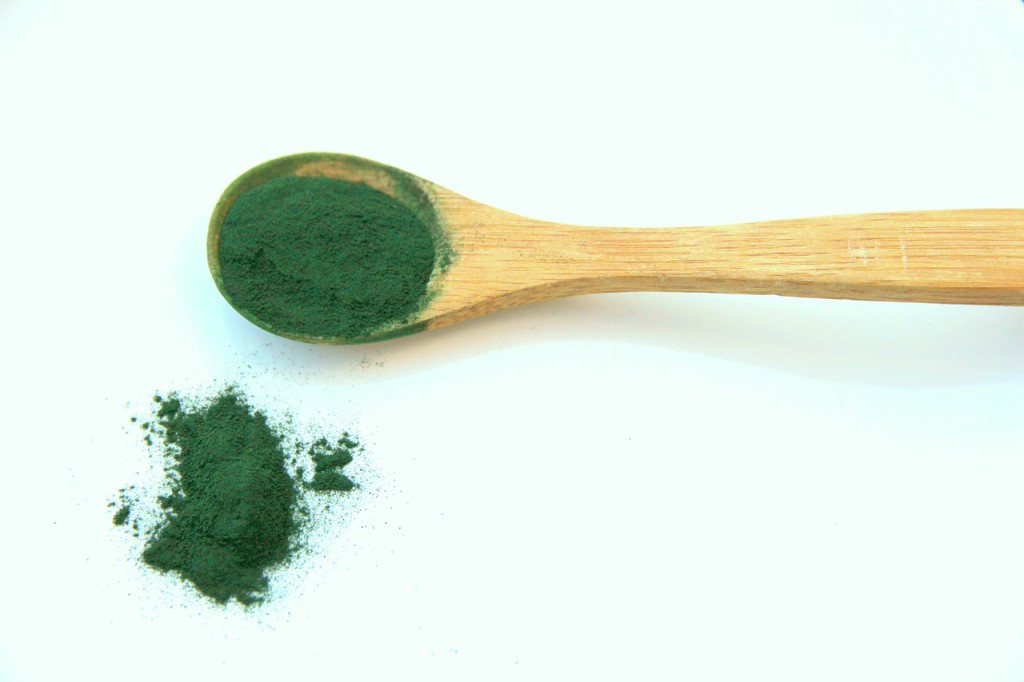Tags
acne aging anti-aging beauty detox diet exercise fasting healing health healthy lifestyle healthy living healthy recipes inspiration juicing Living la Vida Raw meditation mindfulness Move Your Body Natural Beauty natural cures Natural Cures natural remedies nutrition nutritionist parasites raw raw food Raw Food for Thought raw foods raw girl Raw News raw recipes Raw Spirit Recipes skin spirulina stress vegan vegan lifestyle vegan recipes vegetarian Veggie Love wellness yogaNewsletter Sign-up
Tag Archives: vegetarian
7 Simple Weight Loss Tips
It’s almost Christmas!!! Hope you and yours have a merry one, and also managed to avoid starting the New Year with an extra ten pounds to lose added to your resolutions. Weight loss and weight maintenance can at times seem very daunting because there is a plethora of information out there on the topic. Between fad diets, weight loss success stories, and the wide range of experts claiming to have solutions weight loss can start to seem overwhelming or confusing. In my clinical practice I see clients daily struggling with weight loss and maintenance, and these are some simple tips that can help you stay on track.
- Eat Breakfast Daily. A common mistake many people make when they are trying to lose weight is to skip meals. Although it seems logical that if you eat way less or next to nothing at all you will lose weight, that is not the case. When you are undernourished is your body thinks you are starving and conserves fat. By starting the day off with a balanced breakfast (which can be light) we give our body essential nutrients it needs and help to prevent overeating later in the day.
- Weigh yourself at least once a week. Don’t go overboard with this, but monitoring your weight at least once weekly can help you stay on track and make sure you are not unconsciously gaining weight after all of those holiday parties! When weighing yourself try to do it first thing in the morning before meals and at the same consistent time. If you weigh yourself more than once a day you may notice that in the evening or after meals you weigh more which is natural. It’s ideal to only weight yourself once and not get too caught up in the natural daily fluctuations that happen with additional water and food.
- Watch less than 10 hours of TV per week. Reducing the amount of sedentary in your day overall can go a long way to improving weight maintenance and helping with weight loss. Long hours of TV watching is not helpful for many reasons. In addition to the fact that it is a sedentary activity, you may find that while you are watching you also eat. When we eat in front of the television, we tend to overeat ad be less conscious of the portions of food we are consuming. During TV programs there are also multiple advertisements for fast food which can lead us to crave less than healthy foods. If you are going to watch TV for long periods, try exercising while you watch so that you are moving towards your weight loss goals and burning calories.
- Exercise every day, or at minimum two to three times per week. Wellness guru Jack Lalanne once said “Exercise is King. Nutrition is Queen. Put them together and you have a kingdom.” Regular exercise is essential for weight loss, maintaining healthy weight, and remaining youthful. Research has shown that those who exercise regularly are sometimes 10-20 years younger than their non-exercising counterparts.
- Use a food activity / diary or log. Tracking your food and activity keeps you accountable for your health goals. Sometimes we can over or under exaggerate our health habits, but when it is clearly written down we are faced with the truth of our habits and can more easily make adjustments to help us reach our goals. The great news is there are many apps that can assist with tracking including Lose It! And My Fitness Pal. If you are not an app person, you want to use good old fashioned pen and paper to log your meals and that works too!
- Choose a low calorie eating plan. If you are trying to lose weight you may have heard that calories matter. Although the quality of the food you consume can also help encourage weight loss, it is important to be aware of quantity. But where do you start? A simple way to find out what calorie level to work for you is to calculate your basal metabolic rate. There are many basal metabolic weight calculators online and all you need to input is your age and height. You’ll want your calories to remain somewhere between 500-1000 above your BMR depending on your activity level. The best way to receive professional guidance on this is to see a nutritionist or dietician who can create a plan for you.
- Limit fast and processed foods. Consumption of processed food derails your progress and speeds weight gain. When we eat whole nutrient dense foods we avoid refined sugar, refined flours, and excess sodium which increases inflammation and lead to weight gain over time. It’s been proven that the less you eat out the less likely you are to gain weight and you can eat larger quantities at home and lose weight than you can at fast food or restaurants. When we eat fast food the other issue is that our body does not actually receive the nutrients it needs to function optimally, so we don’t get the internal cues to stop eating. On top of that, most processed foods are scientifically designed to make us crave more of them! The added sugars and salt become addictive, but the food does not satisfy our daily nutritional requirements.
Healthy Living in a Toxic World – Episode 1: The Ageless Woman
In this episode of Healthy Living in a Toxic World, I speak to Annette Larkins a living longevity expert, also known as “The Ageless Woman” about what incorporates in her diet and lifestyle to stay ageless.
We discuss:
- How a genetic background for disease can be trumped by lifestyle
- The importance of a positive mindset for staying ageless
- The raw food diet and what kinds of supplements help contribute to staying youthful
- Her personal health journey that led her to a raw food diet
- Annette’s top tips for living a long healthy life
- Important lifestyle habits to help you stay ageless
& More…
Podcast: Play in new window | Download
7 Veg Friendly Spots to Visit in London
 I really love eating well prepared food. However, more than my love for food is experiencing new dishes in a city that I am exploring while traveling. In London I was kept pretty busy with the film festival, but spent the rest of my time scouting for awesome places to try that are vegan and vegetarian friendly. When I lived in London over ten years ago, I remember carrying around a small book that was essentially a pocket guide to all of the vegan friendly restaurants in London. Although I did find some amazing places to eat, it was astounding to see how much more is available to anyone living a plant-based or simply health conscious lifestyle. I would even dare to say that of all of the European cities I have visited London would be number 1 or at the very least in the top three of vegetarian friendly cities. Below are the favorites of my finds while there. If you end up on that side of the pond and try any of these, shoot me a message and let me know what you think! -XO Raw Girl
I really love eating well prepared food. However, more than my love for food is experiencing new dishes in a city that I am exploring while traveling. In London I was kept pretty busy with the film festival, but spent the rest of my time scouting for awesome places to try that are vegan and vegetarian friendly. When I lived in London over ten years ago, I remember carrying around a small book that was essentially a pocket guide to all of the vegan friendly restaurants in London. Although I did find some amazing places to eat, it was astounding to see how much more is available to anyone living a plant-based or simply health conscious lifestyle. I would even dare to say that of all of the European cities I have visited London would be number 1 or at the very least in the top three of vegetarian friendly cities. Below are the favorites of my finds while there. If you end up on that side of the pond and try any of these, shoot me a message and let me know what you think! -XO Raw Girl

 Wild Food Cafe has delicious but simple gourmet dishes at an affordable price. Loved this amazing find tucked away in Neal’s Yard in Covent Garden. Lovely location especially when the weather is great and it’s right next to Neal’s Yard Remedies a natural and organic health and beauty shop perfect for browsing for cruelty-free skincare or supplements before or after your meal. You absolutely must try their cauliflower buffalo wings, and the green burger. Oh and the chocolate tart was to die for.
Wild Food Cafe has delicious but simple gourmet dishes at an affordable price. Loved this amazing find tucked away in Neal’s Yard in Covent Garden. Lovely location especially when the weather is great and it’s right next to Neal’s Yard Remedies a natural and organic health and beauty shop perfect for browsing for cruelty-free skincare or supplements before or after your meal. You absolutely must try their cauliflower buffalo wings, and the green burger. Oh and the chocolate tart was to die for.
 I’ve been in love with Wagamama since I first tried it over 10 years ago. At the time they only had one branch in London in Camden Town and now they have spread throughout London and beyond. There is actually now a Wagamama in New York. Although it’s more cooked fare, they actually have a vegan menu. My favorites are all the fresh veggie juices, the katsu curry, bang bang cauliflower, and the mushroom and panko eggplant hirata steamed buns. Very affordable, service is great, and green tea is always on the house. There are several locations across London.
I’ve been in love with Wagamama since I first tried it over 10 years ago. At the time they only had one branch in London in Camden Town and now they have spread throughout London and beyond. There is actually now a Wagamama in New York. Although it’s more cooked fare, they actually have a vegan menu. My favorites are all the fresh veggie juices, the katsu curry, bang bang cauliflower, and the mushroom and panko eggplant hirata steamed buns. Very affordable, service is great, and green tea is always on the house. There are several locations across London.
Mildred’s Salad Bar I found tucked away while walking from my makeup appointment on my way to Soho. It has a fresh variety of mouthwatering pre-prepared salads that make it a wonderful place to grab lunch.
 Masala Zone Soho is the Indian restaurant I dined at on my birthday. Loved the ambiance and the food. It has been rated one of London’s top Indian restaurants and if you are able to visit, you’ll see why. They serve a sampling of a wide range of Indian cuisines, have good reliable curries, and incredible desserts.
Masala Zone Soho is the Indian restaurant I dined at on my birthday. Loved the ambiance and the food. It has been rated one of London’s top Indian restaurants and if you are able to visit, you’ll see why. They serve a sampling of a wide range of Indian cuisines, have good reliable curries, and incredible desserts.
Dishoom is another top rated Indian restaurant that has people literally queuing up each night to get a seat as they are often overbooked. When I attempted to visit, we decided to skip the long line and head to Masala Zone, but I have heard the wait is worth it. If you want to try this spot I highly recommend making a reservation far in advance. There are two locations that I saw in London, so best to try your luck at both!
 Planet Organic is the UK version of a Mom’s Organic meets Whole Foods. That’s the best way I can describe it. I actually loved it so much more that both of those stores, and was amazed at their incredible supplement section, juice bar, food bar options, and the grocery department. Had lunch there, bought some supplements, some of which I mentioned in my last post, and then took several bars of chocolate to go!
Planet Organic is the UK version of a Mom’s Organic meets Whole Foods. That’s the best way I can describe it. I actually loved it so much more that both of those stores, and was amazed at their incredible supplement section, juice bar, food bar options, and the grocery department. Had lunch there, bought some supplements, some of which I mentioned in my last post, and then took several bars of chocolate to go!
West Cornwall Pasty Co. is a small stand in the Waterloo Tube Station that sells meat and vegetable pies. One night I was rushing to catch Antony and Cleopatra at the National Theater and desperately needed some decent on-the-go but healthy food. I was pleasantly surprised that they had a vegan vegetable pie and it was the perfect answer to my growling stomach.
5 Amazing Benefits of Spirulina
Nowadays, everything seems to be deemed a “superfood” by doctors and health authorities alike. The word superfood is an unscientific term to loosely describe and market a food or foods that offer incredibly high nutritional value. Nature is truly the body’s best healer and many fruits, vegetables, and herbs have nutritional content that is of value to anyone looking to obtain optimal health. Spirulina, which when incorporated in your diet can have positive effects on your energy level, nutrient intake, immunity, and promote healing and prevention of disease is a food that is deserving of the title. So what is spirulina? Spirulina is a blue green algae, a one-celled organism that gets its name from the Latin word helix or spiral, that has been consumed in Africa, Asia, and Mexico dating all the way back to the 9th century. It is the cousin of another algae called chlorella, which is actually great for ridding the body of heavy metals like mercury, but spirulina boasts a much more robust nutrition profile. What makes it so super?
- It contains most of the essential amino acids. To start off spirulina has all eight essential amino acids that the body needs, with an additional bonus of ten of twelve non-essential amino acids included. For those that don’t know, whenever all eight essential aminos are available in any food, that makes it a protein powerhouse. Spirulina is 65-71% protein compared to around 22% in beef, and it’s protein is in a highly digestible form. What makes this an extremely golden plant source of protein is all the additional nutrients that come along with it.
- Spirulina offers essential minerals including potassium, calcium, zinc, iodine, magnesium, selenium, iron, and phosphorous. Add to this nutritional profile, folic acid, niacin, B vitamins including super essential B12, vitamin D, vitamin K, vitamin E, carotenoids (which convert to vitamin A), and chlorophyll and you’ve got a great deal of nutrients needed to get you through your day. Chlorophyll, which has an almost identical molecular structure to human blood, is an important ingredient that gives super healing power.
- Spirulina boosts immunity, increases antioxidant protection, and fights free radicals which in turn slows the aging process. When we consume spirulina, it activates the body to produce more red and white blood cells which kills germs and viruses. It can also relieve allergies, sinus issues, lower cholesterol, lower risk of stroke, heart disease, and risk of contracting cancer. To take it even further not only is this miracle food great for fighting candida, colds, allergies, influenza, measles and mumps, studies have shown that it can inactivate the virus associated with AIDS and HIV [6].
- Spirulina has virtually no calories, and the small percentage of fat it contains are in the form of essential fatty acids. It also curbs appetite and promotes weight loss, supports healthy cardiovascular function, improves the digestion process and gastrointestinal health, and promotes creation of beneficial flora in the digestive tract. Studies have shown that consuming spirulina can lower bad cholesterol and high systolic or diastolic blood pressure [7].
- Spirulina can offer a natural energy boost. Due to all these amazing nutrients, spirulina can give any Plain Jane an energy boost that transforms her into Wonder Woman. Are you a working mom? Take spirulina and give some to your kids. You’ll be more energized and your kids’ immune systems will be strong enough to withstand viruses and colds that get passed around at school. Business woman and multi-tasker on-the-go? Spirulina taken at the beginning of your day can give you the energy boost you need to finish the projects on your plate. Are you addicted to caffeine to give you an energy boost? Try spirulina instead and you will feel naturally energized and get a nutrition boost that trumps any multivitamin on the market. Do you workout a lot? Spirulina can boost athletic performance. Did I mention that it can protect the body from harmful radiation? This legit superfood has a laundry list of health benefits too long to expound upon, the best way to truly know it is to try it for yourself.
You can find spirulina in powder form online or at your local health food store which can be mixed into liquids or pill form. Whatever method you choose to consume it keep in mind that the best way to take spirulina is gradually. Spirulina can have different effects on the body, including nausea or a cleansing reaction if too much is taken too soon. In powder form, starting with as little as a half of a teaspoon and build up to a teaspoon or more if tolerable. It’s best if you slowly begin increasing over time as your body adjusts. Spirulina is great to add to smoothies or juice in the morning because it is so energizing. Take it at night and you may not be able to sleep. If you are suffering from hyperthyroidism, or are pregnant it’s smart to consult with your doctor before incorporating spirulina into your diet. If you have really severe allergies to seafood or iodine, it’s best to not consume spirulina. Whatever method and frequency you choose, spirulina is truly a superfood that has the potential to enhance your health and boost your quality of life.
References:
- Ciferri, O. (1983). Spirulina, the edible microorganism. Microbiological Reviews, 47(4), 551–578.
- Ismail, M., Hossain, M. F., Tanu, A. R., & Shekhar, H. U. (2015). Effect of Spirulina Intervention on Oxidative Stress, Antioxidant Status, and Lipid Profile in Chronic Obstructive Pulmonary Disease Patients. BioMed Research International, 2015, 486120. http://doi.org/10.1155/2015/486120
- Ku, C. S., Yang, Y., Park, Y., & Lee, J. (2013). Health Benefits of Blue-Green Algae: Prevention of Cardiovascular Disease and Nonalcoholic Fatty Liver Disease. Journal of Medicinal Food, 16(2), 103–111. http://doi.org/10.1089/jmf.2012.2468
- Lee, E. H., Park, J.-E., Choi, Y.-J., Huh, K.-B., & Kim, W.-Y. (2008). A randomized study to establish the effects of spirulina in type 2 diabetes mellitus patients. Nutrition Research and Practice, 2(4), 295–300. http://doi.org/10.4162/nrp.2008.2.4.295
- Mirzaie S, Zirak-Khattab F, Hosseini SA, Donyaei-Darian H. Effects of dietary
Spirulina on antioxidant status, lipid profile, immune response and performance
characteristics of broiler chickens reared under high ambient temperature.
Asian-Australas J Anim Sci. 2018 Apr;31(4):556-563. doi: 10.5713/ajas.17.0483.
Epub 2017 Sep 18. PubMed PMID: 28920419; PubMed Central PMCID: PMC5838328. - Teas J, Irhimeh MR. Dietary algae and HIV/AIDS: proof of concept clinical
data. J Appl Phycol. 2012 Jun;24(3):575-582. Epub 2011 Dec 29. PubMed PMID:
22661829; PubMed Central PMCID: PMC3354323. - Torres-Duran, P. V., Ferreira-Hermosillo, A., & Juarez-Oropeza, M. A. (2007). Antihyperlipemic and antihypertensive effects of Spirulina maxima in an open sample of mexican population: a preliminary report. Lipids in Health and Disease, 6, 33. http://doi.org/10.1186/1476-511X-6-33
Work Less, Thrive More: Why You Need a Day Off
 Burnout city is a place that some people love to live. Residents of burnout city love to tell you how busy they are, can never take a call, they complain of their epic to-do lists, long nights, and anxiety at work until…inevitably they crash, have a meltdown, or get sick which is basically the bodies’ way of saying “Slow down!” The saddest part about being a self-proclaimed busy bee is that usually the need to look and in fact be overwhelmed may actually be a coverup for deeper insecurities. Questions like: Am I enough if I don’t achieve? Will I be depressed if I don’t get promoted? Lurk beneath the surface of a seemingly can-do attitude. The other kind of busy bee is the people-pleaser. If you can never say no to other’s requests or demands on your time this may be you. Don’t worry I’m not judging.
Burnout city is a place that some people love to live. Residents of burnout city love to tell you how busy they are, can never take a call, they complain of their epic to-do lists, long nights, and anxiety at work until…inevitably they crash, have a meltdown, or get sick which is basically the bodies’ way of saying “Slow down!” The saddest part about being a self-proclaimed busy bee is that usually the need to look and in fact be overwhelmed may actually be a coverup for deeper insecurities. Questions like: Am I enough if I don’t achieve? Will I be depressed if I don’t get promoted? Lurk beneath the surface of a seemingly can-do attitude. The other kind of busy bee is the people-pleaser. If you can never say no to other’s requests or demands on your time this may be you. Don’t worry I’m not judging.
I get it completely. We all want to look and feel important, and we need validation. However it’s really important to check yo’ self and see if that validation is coming more often than not from other people’s approval, or your own fixation with external markers of success whether it be promotions, money, or keeping up with the Insta lives you scroll through daily. Thankfully evidence has shown that cutting ourselves a little slack may actually go a long way to improving our performance on the tasks that matter the most to us.
Recently a company in New Zealand, called Perpetual Guardian, had their staff of two hundred and forty employees try out a four day work week that was studied by academics. The trial was declared a smashing success with 78% of employees citing increased work-life balance, commitment to the company, and decreased stress levels. Prior to the study only 54% of employees felt that they could balance work and their at-home duties well. Not bad huh? Sweetest part of the deal was that during the trial, employees were paid for five days of work, even though they worked for four!
After just surviving the most grueling workload I’ve ever had to carry by cranking out three months of masters coursework into one month in order to graduate early, this day off idea rings true to me. I was working so hard that I decided that I had to take a Sabbath, just one day a week to do absolutely nothing. Even though two days would have been better, the inactivity always left me refreshed and ready to charge ahead again when the week began. I know most of us do not have the luxury of getting paid for a day off, but we can actively make time to unplug and STOP glorifying burnout. You are not better because you are BUSY. We are ultimately on this earth to live, to thrive, and to share our gifts, and if we could do that in a state of presence and relaxation the world would be a better place. -Xo Raw Girl
References:
Roy, E. A. (2018, July 18). Work less, get more: New Zealand firm’s four-day week an ‘unmitigated success’. Retrieved July 20, 2018, from https://www.theguardian.com/world/2018/jul/19/work-less-get-more-new-zealand-firms-four-day-week-an-unmitigated-success
The Many Reasons to Love Cruciferous Veggies
If I was stranded on a remote island “Survivor” style and could only pick one class of veggies to bring with me, it would be the crucifers, without contest. Cruciferous vegetables (also known as Brassicas) include broccoli, broccoli rabe, cauliflower, cabbage, Brussels sprouts, kale, collard greens, turnips, turnip and mustard greens, arugula, watercress, bok choy (Chinese cabbage), kohlrabi, radishes, and daikon. Although all vegetable have nutritional benefits, the crucifers are superstars in the veggie world as they have been proven by research to assist in detoxification, stimulate the immune system, reduce degenerative damage in the nervous system, protect against cardiovascular disease, slow and even reverse decline of brain functioning and cognitive performance, and can help to restore balance to the endocrine system. Besides their stellar benefits to the bodies’ systems, crucifers have a great nutritional profile containing vitamins, minerals, and fiber that we need to maintain healthy elimination and weight.
There has been quite a bit of research conducted that has shown that increased consumption of cruciferous vegetables lowers the risk of contracting cancers including breast and prostate. The phytochemicals found in cruciferous vegetables can stimulate enzymes in the body that will remove carcinogens through the body’s’ detoxification pathways before they damage cells. By now you may be aware of the harmful effects stress can have on your body. Well oxidative stress, which occurs from the overload of harmful molecules called free radicals, accelerates our aging and can lead to disease or health conditions over time. When you consume large amounts of cruciferous vegetables, you reduce oxidative stress which in turn helps to reduce the risk of colon, lung, prostate, breast, and other cancers. In animal studies, cruciferous vegetables have been shown to reduce inflammation; which may point to an anti-inflammatory effect as one of the benefits for human consumption.
Just in case you aren’t convinced that #TeamCrucifer is the greatest, there are some vanity reasons to consume them as well. For those struggling with acne for hormonal reasons, cruciferous vegetables can provide some relief because they assist the body in restoring hormonal balance. This also makes consuming cruciferous vegetables wonderful for women struggling with fibroids or endometriosis who may have an issue of estrogen dominance. Whatever reason you chose to join #TeamCrucifer know that getting your greens in will help improve your overall health, skin, youthfulness, and vitality. -XO Raw Girl
References:
Abdull Razis AF, Noor NM. Cruciferous vegetables: dietary phytochemicals for
cancer prevention. Asian Pac J Cancer Prev. 2013;14(3):1565-70. Review. PubMed
PMID: 23679237.
APAPollock, R. L. (2016). The effect of green leafy and cruciferous vegetable intake on the incidence of cardiovascular disease: A meta-analysis. JRSM Cardiovascular Disease, 5, 2048004016661435. http://doi.org/10.1177/2048004016661435
Jiang Y, Wu SH, Shu XO, Xiang YB, Ji BT, Milne GL, Cai Q, Zhang X, Gao YT,
Zheng W, Yang G. Cruciferous vegetable intake is inversely correlated with
circulating levels of proinflammatory markers in women. J Acad Nutr Diet. 2014
May;114(5):700-8.e2. doi: 10.1016/j.jand.2013.12.019. Epub 2014 Mar 13. PubMed
PMID: 24630682; PubMed Central PMCID: PMC4063312.
Wu QJ, Yang Y, Vogtmann E, Wang J, Han LH, Li HL, Xiang YB. Cruciferous vegetables intake and the risk of colorectal cancer: a meta-analysis of observational studies. Annals of Oncology 2013; 24(4): 1079-1087.
Mid-Year Reflection: How Taking Stock Can Propel You Forward
 Can you believe it’s already July? 2018 is moving at lighting speed and before you know it, it’ll be January again and we will be staring at the year’s list of resolutions either amped because we succeeded, or a little meh because we fell short of our mark. As a self-proclaimed Type A personality, I had to learn years ago to slow my roll when it came to goal setting. Have you ever had the moment where you had to tell yourself, to “have several seats?” Well I have and it was humbling at first, but after I processed the feels of failure it became liberating and also increased my faith. The saying is totally true: “Man makes plans, God laughs.” There is so much out of our control these days between natural disasters to politics to general world crises it can feel like nothing is in our control. The good new is we do have control over a few things: our attitude towards our work, how we treat people, how we treat ourselves, and every day we can choose to take daily steps to push us further towards our big vision.
Can you believe it’s already July? 2018 is moving at lighting speed and before you know it, it’ll be January again and we will be staring at the year’s list of resolutions either amped because we succeeded, or a little meh because we fell short of our mark. As a self-proclaimed Type A personality, I had to learn years ago to slow my roll when it came to goal setting. Have you ever had the moment where you had to tell yourself, to “have several seats?” Well I have and it was humbling at first, but after I processed the feels of failure it became liberating and also increased my faith. The saying is totally true: “Man makes plans, God laughs.” There is so much out of our control these days between natural disasters to politics to general world crises it can feel like nothing is in our control. The good new is we do have control over a few things: our attitude towards our work, how we treat people, how we treat ourselves, and every day we can choose to take daily steps to push us further towards our big vision.
 The mid-year mark is a great moment to stop pushing for a moment, stop, breathe and reflect on what you have accomplished thus far and also take a holistic look at your wellness. One of my favorite exercises to do to assess the current state of my wellness is the wheel exercise. If you’ve never done it is requires us to create a circle (as pictured) with various areas of well-being as slices of the pie or spokes on the wheel. These areas can include: finances, relationships/social, health, work, and spiritual well-being. We can score these areas from 1-10 and place a dot in each section (with zero at the center and 10 at the outside of the wheel). Then we connect the dots and see how close or far away from a circle our wheel is. What’s amazing about this is that it is like a snapshot of the current state of our lives. We may be crushing it at work, but our relationship department is horrible because of family or partner issues. Or our health could be poor, and that could be lowering our work score because we don’t have the energy to perform at our peak.
The mid-year mark is a great moment to stop pushing for a moment, stop, breathe and reflect on what you have accomplished thus far and also take a holistic look at your wellness. One of my favorite exercises to do to assess the current state of my wellness is the wheel exercise. If you’ve never done it is requires us to create a circle (as pictured) with various areas of well-being as slices of the pie or spokes on the wheel. These areas can include: finances, relationships/social, health, work, and spiritual well-being. We can score these areas from 1-10 and place a dot in each section (with zero at the center and 10 at the outside of the wheel). Then we connect the dots and see how close or far away from a circle our wheel is. What’s amazing about this is that it is like a snapshot of the current state of our lives. We may be crushing it at work, but our relationship department is horrible because of family or partner issues. Or our health could be poor, and that could be lowering our work score because we don’t have the energy to perform at our peak.
When we learn to measure our success by how full our wheel is, we not only remind ourselves to move beyond the superficial, but we are loving ourselves enough to want wholeness in every aspect of our lives. If you have never made a wellness wheel I challenge you to make one today. Once you assess each area of your life, start brainstorming on daily actions you can take to improve in the categories that fell short. As seasons change some categories will always fall below the goal, and that is okay. The aim should not be for perfection, but reflection that leads to real action that can help us live the lives of our dreams. -Xo Raw Girl
Summer Nutrition: 10 Foods That Help to Beat the Heat
 Summer is finally here and it’s a great time to break out the sunscreen and also change our diets to suit the season. In the summer we generally are outdoors more often, so we need to consider the effects of the heat and our bodies’ need for more hydration. Remember the very general rule of thumb is to consume in fluid ounces around half of your body weight in water, but if you are very active, and also outside more often during the summer I would increase your requirements, not to exceed around 125 fluid ounces. Don’t forget you can also boost your hydration using food! I personally love to be high, if not 100% raw during this summer season because the lighter, more water-rich the better I feel. Every person is unique, so it’s important that you find what works for your body. Because most of us get our produce in grocery stores, it can be very difficult to know what is in season. This is a great time to get out and venture to a local farmer market to try some new fruit or veg, heavier on the fruit. Below are a few of my summer, summertime favorites that will help you to stay cool during beach season. – Xo Raw Girl
Summer is finally here and it’s a great time to break out the sunscreen and also change our diets to suit the season. In the summer we generally are outdoors more often, so we need to consider the effects of the heat and our bodies’ need for more hydration. Remember the very general rule of thumb is to consume in fluid ounces around half of your body weight in water, but if you are very active, and also outside more often during the summer I would increase your requirements, not to exceed around 125 fluid ounces. Don’t forget you can also boost your hydration using food! I personally love to be high, if not 100% raw during this summer season because the lighter, more water-rich the better I feel. Every person is unique, so it’s important that you find what works for your body. Because most of us get our produce in grocery stores, it can be very difficult to know what is in season. This is a great time to get out and venture to a local farmer market to try some new fruit or veg, heavier on the fruit. Below are a few of my summer, summertime favorites that will help you to stay cool during beach season. – Xo Raw Girl
- Watermelon – I love my watermelon in the summer and it’s the perfect refreshing and cooling treat when the heat gets too much. There are many ways to skin a watermelon so don’t get bored by just eating it straight. Try squeezing lime and a pinch of sea salt over your watermelon, or blending in into a summer cocktail with some fresh basil or mint.
- Citrus – Oranges, grapefruit, tangerines oh my! Citrus is an excellent source of vitamin C and research has indicated that consuming foods rich in vitamin C may help to reduce body temperature or just cope with the heat more productively.
- Squash – High in water content, and abundant at local farms in the summer, squash can be a versatile addition to summer nutrition. Try Zucchini noodles anyone? You can also add them to salads and lightly steam them. After steaming, freeze some of the zucchini and add to smoothies to boost the nutrition in your morning shake. Trust me, you won’t even know it’s in there.
- Celery & Fennel – Celery is one of my favorite additions to my daily juices in the summer. Celery also contains a healthy amount of sodium, and is a great juice to drink to maintain electrolyte balance. Fennel is a super delicious addition to salads and also can be juiced. Both celery and fennel are diuretics, which promote the formation of urine in the kidney.
- Cantaloupe and Honeydew Melon – Both melons have high water content, are diuretics, and can be a refreshing addition to a summer fruit salad.
- Apricots, Peaches, Nectarines – Nectarines and apricots are sweet, juicy, and lovely to carry around as on-the-go snacks in the summer. Both are rich in vitamin A and the antioxidant beta carotene.
- Cucumbers – Up there in the all time favorites for addition to veggie juice in the summer, cucumbers are rich in water content and generally refreshing. Juice it, add it to your salads, and when you have left overs put a few over your eyes to reduce puffiness and relax.
- Coconuts/ Coconut Water – Another amazingly hydrating food, coconuts are excellent for hydration, and coconut water is a great natural source of electrolytes. I love to add coconut water and meat to smoothies in the summer, or even better just eat them plain.
- Radishes – You may usually avoid the radishes when perusing the veggies at your local grocery store, but during the summer you may want to pick some up. Radishes are high in water content, somewhere around 95%, rich in vitamin C and add a nice kick to salads.
- Pomegranates – Rich in antioxidants, vitamin K, vitamin C, folate, potassium and fiber, pomegranates are the bomb.com when it comes to a dense nutrient profile. You can drink pomegranate juice (beware of added sugars) or add the seeds to your salads for a colorful and flavorful summer meal.
References:
Strydom NB, Kotze HF, van der Walt WH, Rogers GG. Effect of ascorbic acid on
rate of heat acclimatization. J Appl Physiol. 1976 Aug;41(2):202-5. PubMed PMID:
956103.
5 Reasons to Drink Green Tea
When it comes to tea, it’s safe to say that green tea is one of the most researched cups out there, probably because it has been used for medicinal purposes in China and Japan for thousands of years. If you are weaning yourself off of coffee, green tea can be an excellent addition to your routine because it does contain some caffeine, but less than coffee, and also includes some additional health benefits that’ll make that morning cup seem oh so worth it! Green tea comes from the same plant as black and oolong teas, but is lightly steamed in preparation. Because it is not as processed, green tea contains a rich supply of catechins, which are antioxidants that can help to reduce and prevent cell damage. Research has show that one of green tea’s components ECCG, has potential protective effects against heart disease and cancer. In addition to this, green tea contains numerous phytochemicals that may help improve memory and cognition, powerful antioxidants that may decrease oxidative damage to the mitochondria in the brain, and it may also assist in relieving digestive symptoms and headaches. Research has shown that, aside from helping to prevent cancer and heart disease, green tea offers protection from the development of Parkinson’s disease, Alzheimer’s disease, and other brain disorders.
Although green tea has not been proven to be the answer when you are looking to drop a few pounds, the tannins and polyphenols of green tea do help the body regulate insulin sensitivity while helping the brain maintain a steady supply of glucose. This can also assist to regulate energy, mood swings, and help maintain a positive outlook during the day. While green tea contains less caffeine than coffee, it may still contain more caffeine than some can tolerate so listen to your body and adjust accordingly. If the caffeine is too much for you, try getting rid of the first steeping of the tea bag and steep again using the same tea bag, or drink decaffeinated green tea instead. Want the health benefits but find green tea too bitter for you to taste? Try using cooled green tea instead of water or juice when you make your morning smoothie. Brewed green tea can also be poured over cooked brown rice and topped with vegetables like seaweed or other greens. In the summer to beat the heat, try iced green tea in summer with some lemon juice topped with a mint leaf.
If possible, try to consume green tea without added sugar. If you must sweeten it, try using an alternative to refined sugar like coconut sugar, xylitol, or stevia. Consuming foods or drinks that are bitter is exceptionally good for your digestion and curbing sugar cravings, so if you can brave it I recommend drinking it straight up. -Xo Raw Girl
References:
- Boehm K, Borrelli F, Ernst E, et al. Green tea (Camellia sinensis) for the prevention of cancer. Cochrane Database of Systematic Reviews. 2009;(3):CD005004 [edited 2010]. Accessed at http://www.thecochranelibrary.com (link is external) on July 16, 2015.
- Green tea. Natural Medicines Web site. Accessed at naturalmedicines.therapeuticresearch.com/ on July 16, 2015. [Database subscription].
- Hartley L, Flowers N, Holmes J, et al. Green and black tea for the primary prevention of cardiovascular disease. Cochrane Database of Systematic Reviews. 2013;(6):CD009934. Accessed at http://www.thecochranelibrary.com (link is external) on July 16, 2015.
- Jurgens TM, Whelan AM, Lillian L, et al. Green tea for weight loss and weight maintenance in overweight or obese adults. Cochrane Database of Systematic Reviews. 2012;(12):CD008650. Accessed at http://www.thecochranelibrary.com (link is external) on July 16, 2015.
- Scott, P. S. (n.d.). Health Benefits of Green Tea. Retrieved July 12, 2018, from https://www.webmd.com/food-recipes/features/health-benefits-of-green-tea#1










